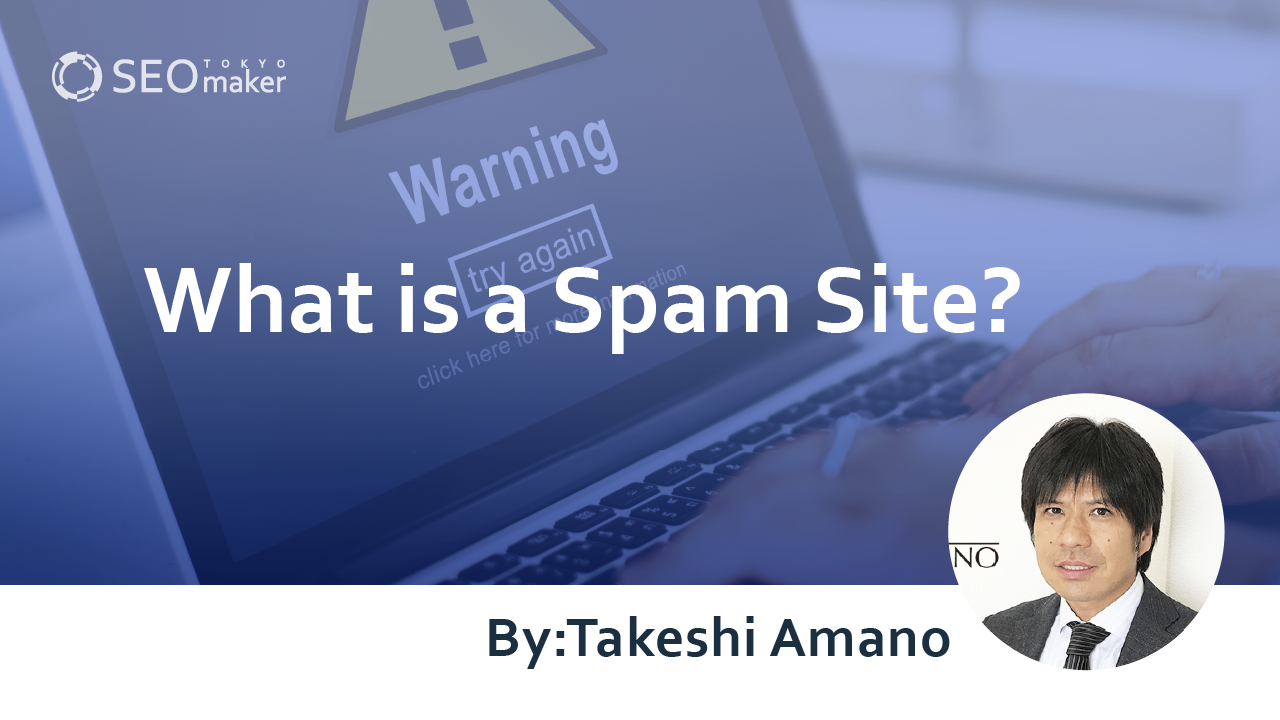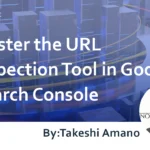What is a Spam Site? : Introducing 8 Causes, Detection Tools, and Remedies
contents
- 1 What is a Spam Site?
- 1.1 [Caution] Spam sites are risky and negatively impact SEO
- 1.2 Eight Characteristics of Content That Could Be Considered Spam
- 1.3 Presence of Unreadable Text or Links
- 1.4 Unsanctioned Copying and Pasting of Content
- 1.5 Excessive Use of Search Keywords
- 1.6 Using Automatically Generated Text As Is
- 1.7 Purchasing Backlinks
- 1.8 Receiving Backlinks from Low-Quality Sites
- 1.9 User-Unintended Redirects Set Up
- 1.10 Inclusion of Forceful Actions
- 1.11 Three Typical Types of SEO Spam
- 2 Tools to Check if Your Site or Content is Considered Spam
- 3 Handling Being Labeled as a Spam Site
- 4 Frequently Asked Questions About Spam Links
- 5 Summary

Even though many have heard the term “spam site,” not everyone understands what it actually entails.
A spam site refers to a website engaged in malicious activities on the internet. To achieve reliable results in SEO, it’s crucial to understand spam sites and implement effective measures against them.
In this article, we’ll provide an overview of spam sites, including the main reasons they are labeled as such, methods for handling them, and tools for detection. Use this information to protect your site from spam.
What is a Spam Site?
A spam site is considered a website that conducts “malicious activities” on the internet.
The term “spam” itself means “nuisance.” Sites containing content that users did not intend to engage with may be deemed as spam.
Specific causes that can label a site as spam include;
- Links that cannot be accessed
- Unauthorized use of other content
- Excessive use of search keywords
- Improper redirect settings
[Caution] Spam sites are risky and negatively impact SEO
Spam sites are high-risk and can have a severe negative impact on SEO because they are perceived as promoting unreliable information or business activities.
Providing fake information or fraudulent content essentially deceives users. Various search engines, which advocate for a user-first approach, carefully monitor daily to prevent user harm from such sites.
It’s not uncommon for site operators to be unaware that their SEO strategies might be considered spam. Therefore, it is crucial for website operators to correctly identify spam sites and address them appropriately.
Eight Characteristics of Content That Could Be Considered Spam
Content with the following characteristics may be perceived as coming from a spam site
-Presence of unreadable text or links
-Unauthorized copying and pasting of other content
-Excessive use of search keywords
-Use of automatically generated text
-Purchasing backlinks
-Receiving backlinks from low-quality sites
-User-unintended redirects are set up
-Contains forceful actions
Presence of Unreadable Text or Links
Text or links that cannot be viewed are likely to be considered indicative of a spam site.
Specific examples of unreadable text or links include;
- Black text on a black background
- Text or links covered by images
- Text or links positioned off-screen
- Text size set to zero
- Links that are inconspicuous, such as a single character
Text and links should be clearly visible to users and appropriately placed. Practices like the ones mentioned above are far from being user-first and may lead to the content being regarded as spam.
Unsanctioned Copying and Pasting of Content
Copying and pasting text or links from top SEO content without permission can frequently lead to being targeted as spam.
While some may try to counteract this by only changing the end of the text, it is generally ineffective as a strategy.
If you must reference another site, it’s necessary to understand the content completely and change the phrasing completely from the beginning to the end.
Additionally, this copying behavior not only risks being seen as spam but also violates copyright laws, so caution is needed.
Excessive Use of Search Keywords
Incorporating search keywords into your content can effectively enhance your SEO.
However, there’s a limit to how much is beneficial. Excessively and unnaturally stuffing keywords can increase the likelihood of being perceived as a spam site.
It’s because unnatural text created by improper keyword placement can make content difficult for users to read.
Ideally, the keyword density should be kept around 3-4% relative to the total number of words.
Using Automatically Generated Text As Is
Nowadays, there are many tools, including ChatGPT, that can generate natural-sounding text.
However, using text generated by these tools as is can also lead to being marked as spam.
This is because, despite seeming natural, these texts often make little sense upon closer inspection or use repetitive phrasing with similar keywords.
As technology to discern text created by AI is expected to advance, relying on such automated content might soon become a detriment to SEO strategies.
Purchasing Backlinks
Backlinks refer to instances when external content links back to your content. Acquiring many backlinks is seen as an indicator of a reputable site and can significantly benefit SEO.
However, purchasing backlinks to improve SEO rankings is a common yet problematic practice.
Search engines can quickly identify purchased backlinks due to monitoring link relevance and the progression of backlink acquisition.
Purchased backlinks can backfire in terms of SEO and increase the risk of being identified as a spam site, so be cautious.
Receiving Backlinks from Low-Quality Sites
Acquiring backlinks can have a significant positive impact on SEO.
However, if the site linking to yours is filled with copied content or solely uses automatically generated content, it can actually harm your SEO. Worse, it might even increase the risk of being considered a spam site.
Creating truly useful content that can earn backlinks from reputable websites is an effective way to combat spam and enhance your SEO.
User-Unintended Redirects Set Up
A redirect refers to the technology that automatically transfers users from one URL to another, typically used when moving a site or changing domains.
However, misuse of redirects to lead users to unrelated affiliate sites, for example, is not uncommon.
Content with redirects set up to links not intended by the user is likely to be viewed as spam. Be cautious and avoid unnecessary redirects.
Inclusion of Forceful Actions
Websites containing “forceful actions” that go against user intentions are also likely to be considered spam.
Specific examples of forceful actions include;
- Download links for files that could potentially be infected with viruses
- Links whose descriptions do not match the content they lead to
- Download files that contain unnecessary data for the user
Even if it’s for improving metrics, never include elements that resemble traps which users can’t immediately discern.
Three Typical Types of SEO Spam
There are several types of SEO spam, which broadly fall into the following three categories.
-Keyword Spam
-Link Spam
-Content Spam
Keyword Spam
This refers to instances where the use of keywords is considered spam.
For example, as mentioned previously, this includes;
- Presence of unreadable text or links
- Overuse of search keywords
Using the same color text as the background or setting text and links to a size of zero can confuse users and is likely to be seen as spam.
Excessively using search keywords to unfairly boost SEO rankings, known as “keyword stuffing,” is illegal and should be avoided.
Link Spam
This category includes examples where links are considered spam, specifically;
- Download links that pose a virus infection risk
- Links where the text does not match the content they lead to
- Links that cannot be viewed (such as text color matching the background or being hidden behind images)
- Purchasing backlinks
- Acquiring backlinks from low-quality sites
Especially, download links with a virus risk or links that do not match their descriptions are problematic because they cannot be verified without clicking.
Such practices are extremely bothersome to users and therefore are considered spam.
Top of Form
Content Spam
Content spam refers to instances where the content itself is considered spam. Specifically, this includes;
- Excessive use of copied and pasted text
- Using automatically generated text as is
- Inclusion of forceful actions not intended by the user
- Overall low quality of the content
Copying from other content or using text generated by AI tools can easily be detected by search engines.
Also, setting up unauthorized redirects that automatically transfer users to a specific URL is considered a forceful action and targets for spam.
Tools to Check if Your Site or Content is Considered Spam
The following tools can help you determine if your site or content is being recognized as spam
- Google Search Console
- SecURL
- Aguse
Google Search Console
Google Search Console is a website optimization tool provided by Google.
By registering your site, you can check search queries, index status, and errors, among other things.
The steps to check for spam are as follows
- Log in to Google Search Console.
- Select “Links” from the left sidebar menu.
- Check URLs listed under “Top linking sites” and “Top linked pages.”
- Deny any suspicious sites.
The “Top linking sites” and “Top linked pages” sections allow you to see which sites are linking to your site.
There are several ways to deny these links, but using Google’s own link disavow tool is the most effective method.
SecURL
SecURL is a spam-check site operated by Gigafire Inc. When you visit the site, you’ll see a large URL input bar on the first view. Simply enter your company’s website URL and click “Check.” With these steps, you can easily determine whether your site is considered spam.
Unlike Google Search Console, SecURL does not require prior registration or setup, making it convenient and easy to use.
Aguse
Aguse is another spam-check site provided by Agusenet Inc.
Similar to SecURL, upon accessing the site, there is a URL input bar in the center. Just enter your company’s website URL and click “Investigate” to determine if it is regarded as spam.
If the result screen at the bottom shows “SAFE” in light blue letters under “Blacklist Judgment Results,” then there is no worry about spam.
Handling Being Labeled as a Spam Site
It can be distressing to be labeled as a spam site by various tools, but it’s important to remain calm and take the following steps.
- Calmly investigate the reasons why your site was flagged as spam.
- Make corrections and changes to the spam-related content.
- Submit a request for reevaluation.
Calmly Investigate the Causes of Being Labeled as Spam
If your site is identified as a spam site, first remain calm and check the reasons behind this judgment.
For example, if you find URLs from suspicious foreign sites listed under “Top linking sites” or “Top linked pages” in the “Links” menu bar, it indicates that backlinks from these dubious sites are the likely cause.
Also, if there are items marked in red as “Unavailable” under “Mobile Usability,” it signifies that there are elements that are difficult for users to interact with.
Make Corrections and Changes to the Spam Content
Once you understand the causes behind being marked as spam, you should make appropriate corrections and changes.
For instance, if the issue was backlinks from suspicious external sites, the best measures would be
- Requesting the deletion of these links from the linking site
- Using Google’s link disavow tool
If spam labeling was due to usability issues, Google Search Console will specify the causes and the affected content. Ensure you review and make the necessary adjustments.
Submit a Reconsideration Request
After making changes and corrections, your job isn’t finished. You must notify Google of these changes through a process called “reconsideration.”
To request a reconsideration, go to the “Security and Manual Actions” section in Google Search Console and click on “Manual Actions.”
If no spam issues are detected, you’ll see a message saying “No issues detected.” However, if your site is still seen as spam, the causes will be listed along with a red “Request a review” button.
Ensure that the changes have been properly implemented before submitting the request. Sending a request without making necessary changes will not alter the outcome.
After submitting your request, it typically takes about 2 days to 2 weeks for the changes to be reflected.
Frequently Asked Questions About Spam Links
Here, we respond to common inquiries regarding spam links.
Q: How can I check for spam links?
A: To check for spam links, you must use specialized tools. Notable tools include
- Google Search Console
- SecURL
- Aguse
Google Search Console is especially recommended because, although it requires prior registration and setup, it provides clear insights into the causes of spam judgments and content URLs for free.
SecURL and Aguse are also known for their simplicity; you can paste your site’s URL and receive a free spam assessment.
Q: What constitutes spam activity?
A: Spam activity generally includes the following.
- Presence of unreadable text and links
- Frequent copying and pasting from other content
- Overuse of search keywords
- Use of automatically generated text
- Purchasing backlinks
- Acquiring backlinks from dubious sites
- Setting up unwanted redirects
- Attaching download links with a virus infection risk
All these actions diminish site usability and credibility, so be cautious.
Furthermore, it’s not uncommon for people to engage in these settings without realizing they constitute spam. Knowing what actions are illegal is crucial.
Q: What does on-site search spam mean?
A: On-site search spam refers to spam attacks aimed at degrading the ratings of competitor websites.
Specifically, it involves creating low-quality spam sites and publishing them with links to the sites you want to downgrade. Backlinks from suspicious and low-quality sites can lower SEO ratings.
This strategy aims to improve your own site’s search rankings by lowering those of others, but it’s a malicious and illegal act.
If you find yourself targeted by on-site search spam, it’s vital to use tools like Google’s link disavow tool to take swift action.
Q: How can I remove spam links?
A: If your site has been linked by a spam site, you can take the following actions.
- Contact the site that linked to you and request removal
- Use Google’s “Link Disavow Tool”
The recommended approach is to use Google’s Link Disavow Tool. Contacting the site directly may not lead to improvements, especially if the site linked with malicious intent or is based overseas.
Summary
A spam site, in simple terms, is one that engages in malicious activities. By defining and penalizing such sites, internet and browser security is upheld. Not only should you refrain from engaging in spam activities, but you also need to understand spam tactics thoroughly and take appropriate, regular measures to avoid unjust attacks. Creating user-first content and maintaining your search rankings through proper measures are also vital aspects of SEO strategy.










![What is a Description? Explaining the Meaning, Writing Style, and Changing Word Count – [2023 Edition]](https://www.switchitmaker2.com/en/wp-content/uploads/2024/09/what-is-description.webp)










